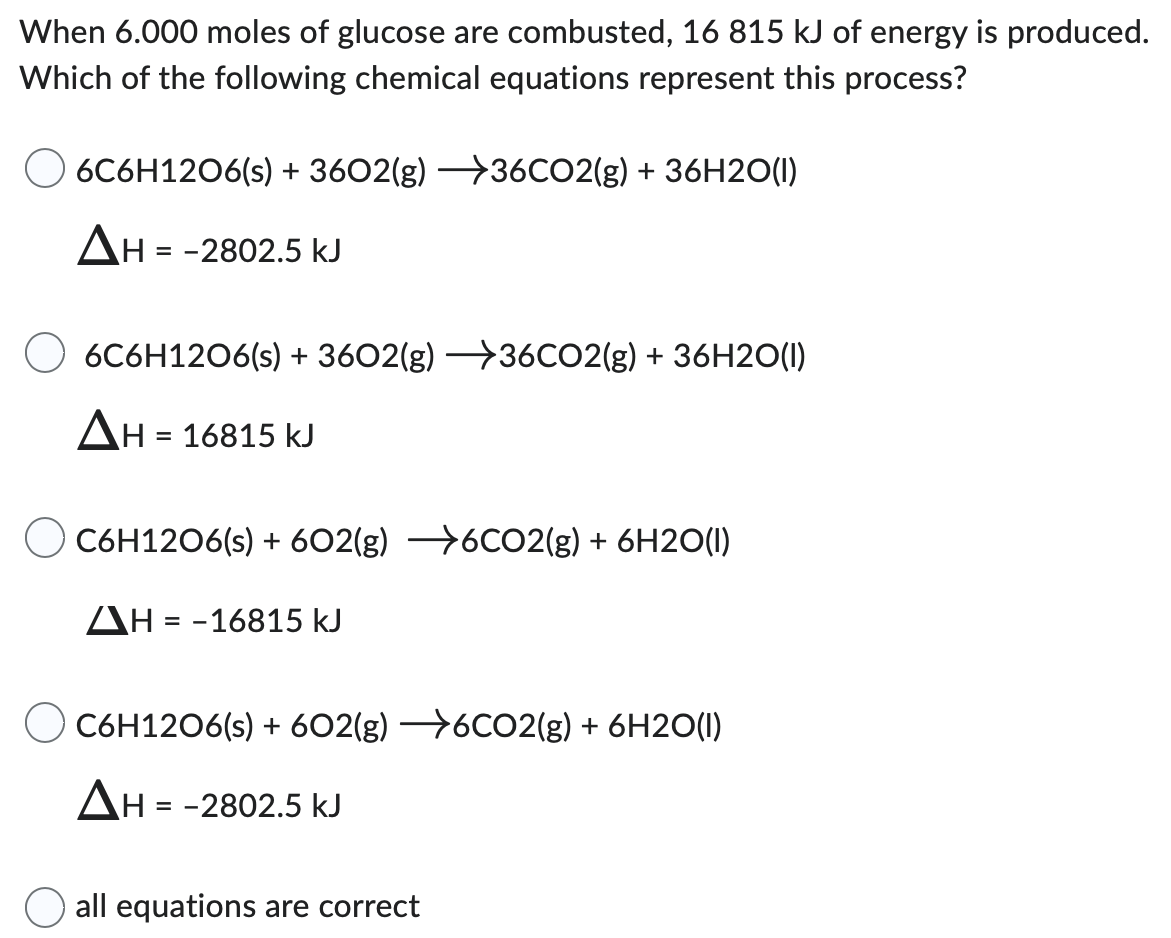When 6.000 moles of glucose are combusted, 16815 kJ of energy is produced. Which of the following chemical equations represent this process? 6C6H12O6(s) + 36O2(g) → 36CO2(g) + 36H2O(l) ΔH = −2802.5 kJ 6C6H12O6(s) + 36O2(g) → 36CO2(g) + 36H2O(l) ΔH = 16815 kJ C6H12O6(s) + 6O2(g) → 6CO2(g) + 6H2O(l) ΔH = −16815 kJ C6H12O6(s) + 6O2(g) → 6CO2(g) + 6H2O(l) ΔH = −2802.5 kJ all equations are correct
